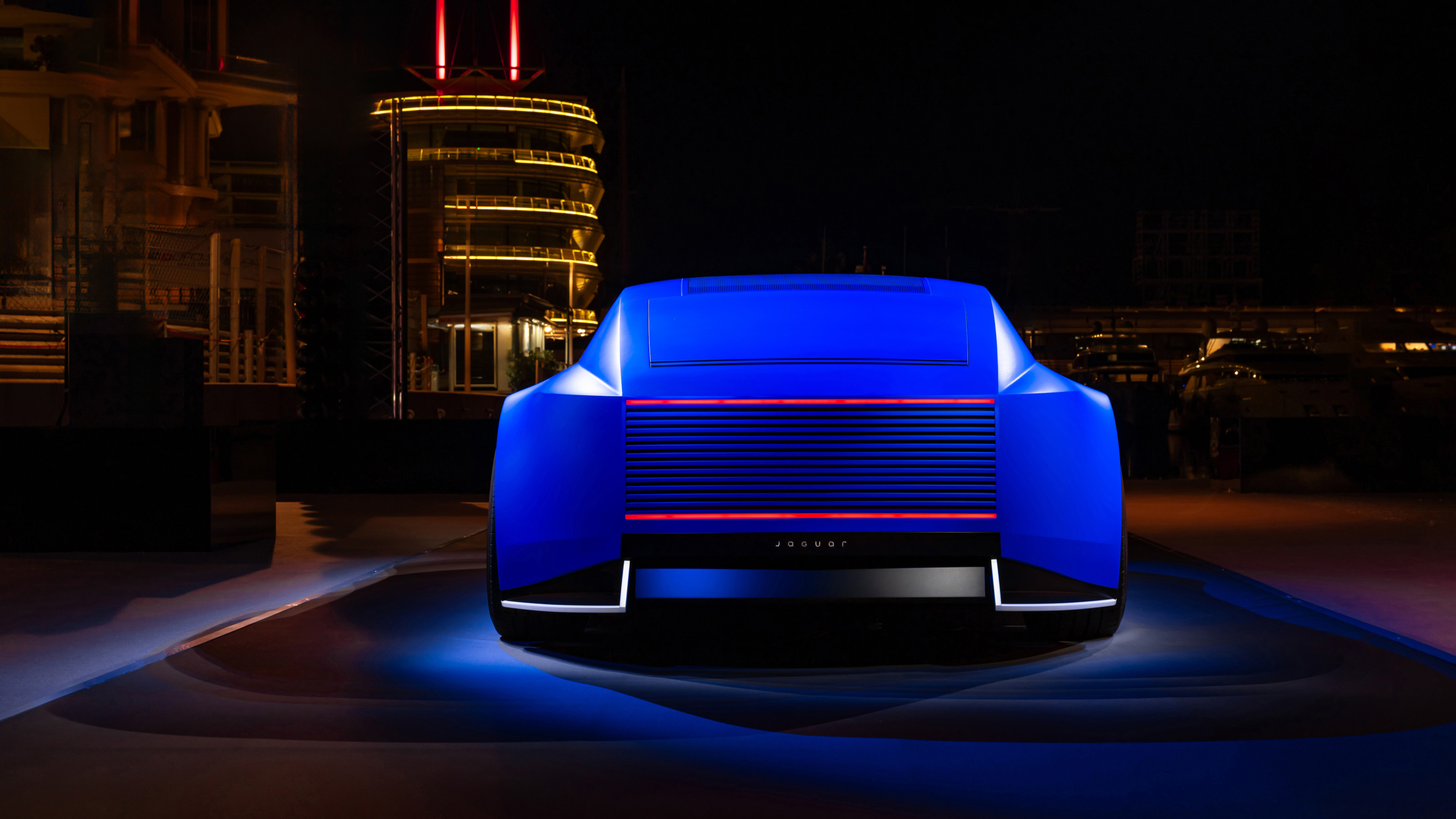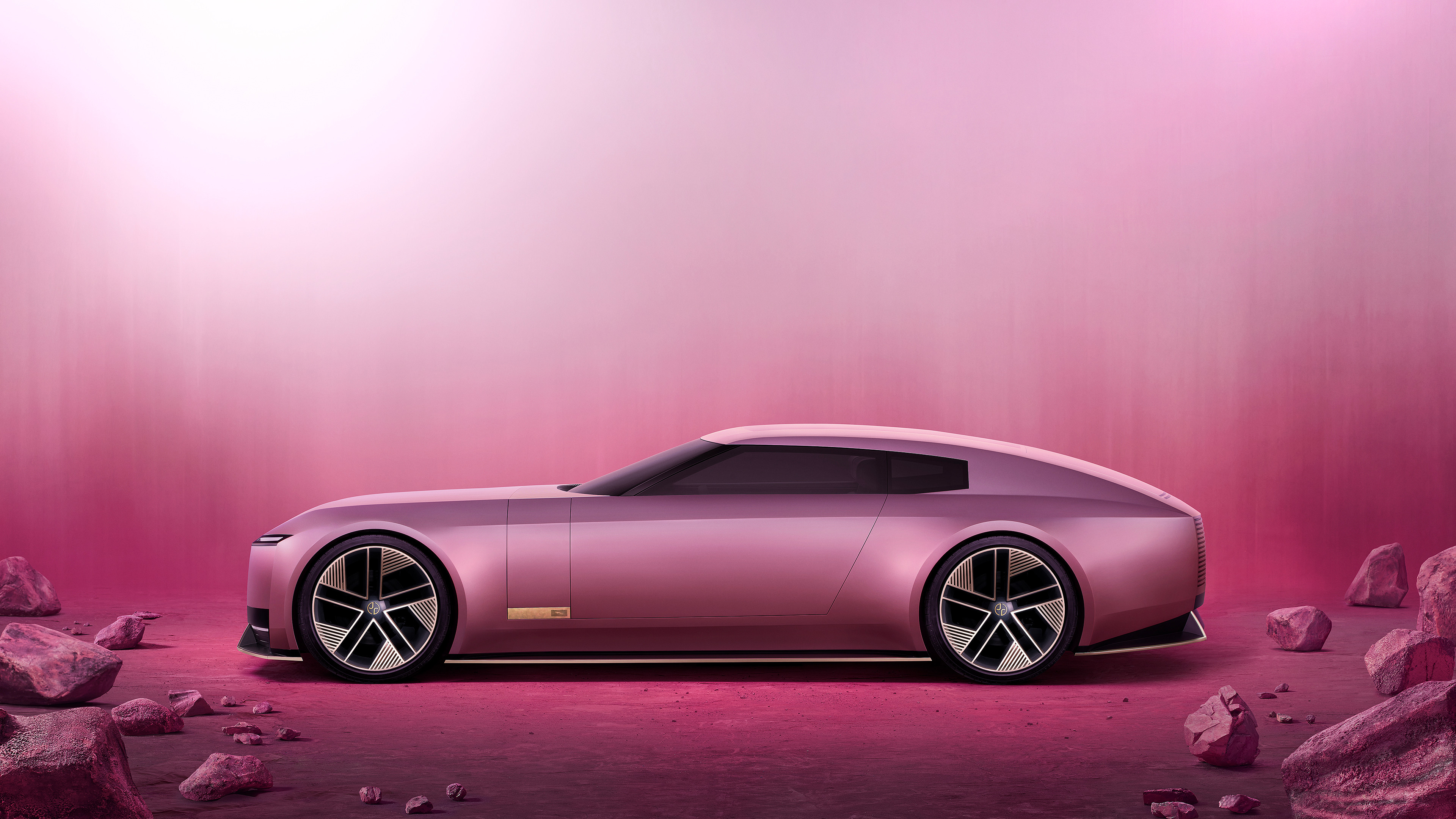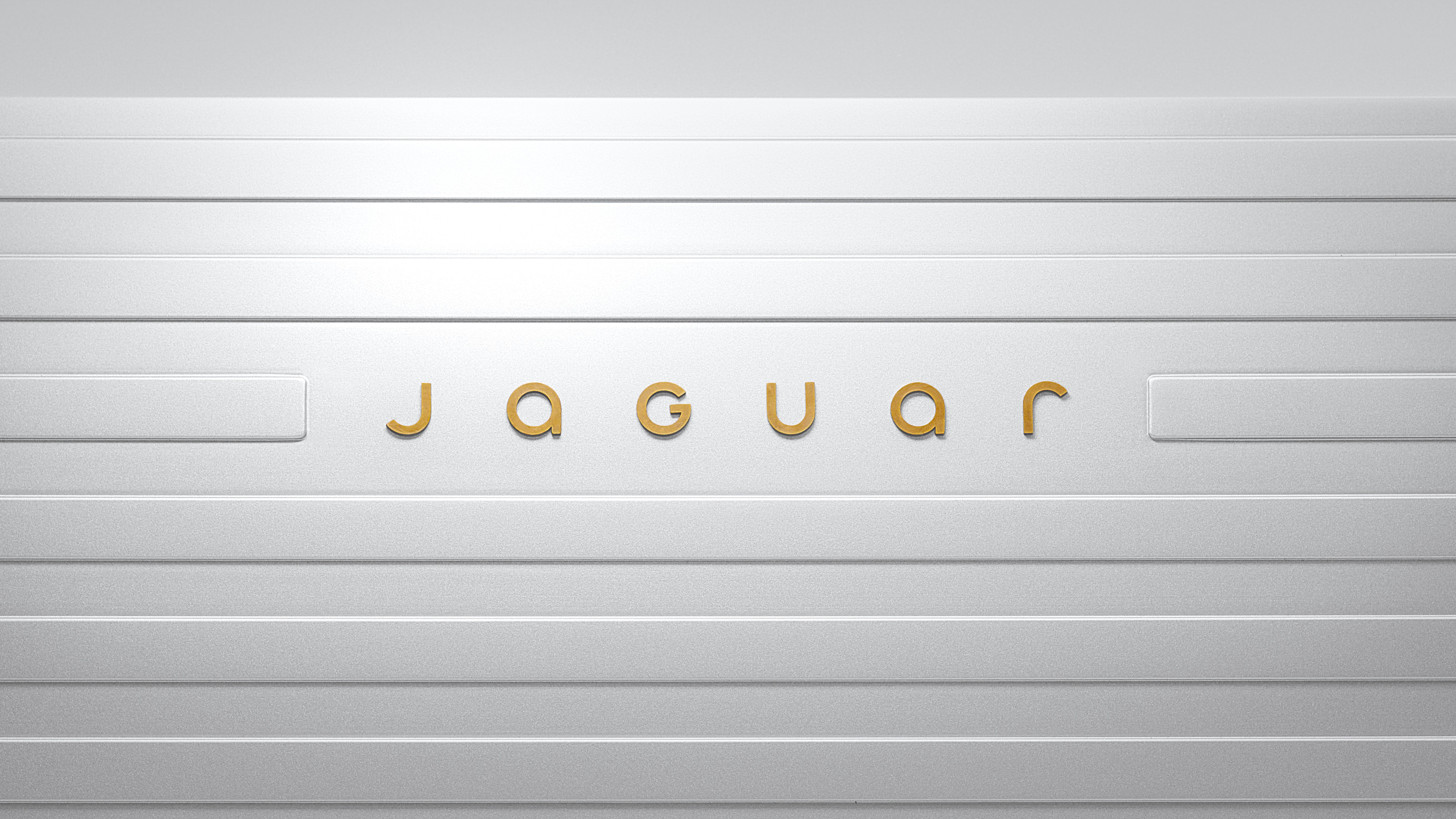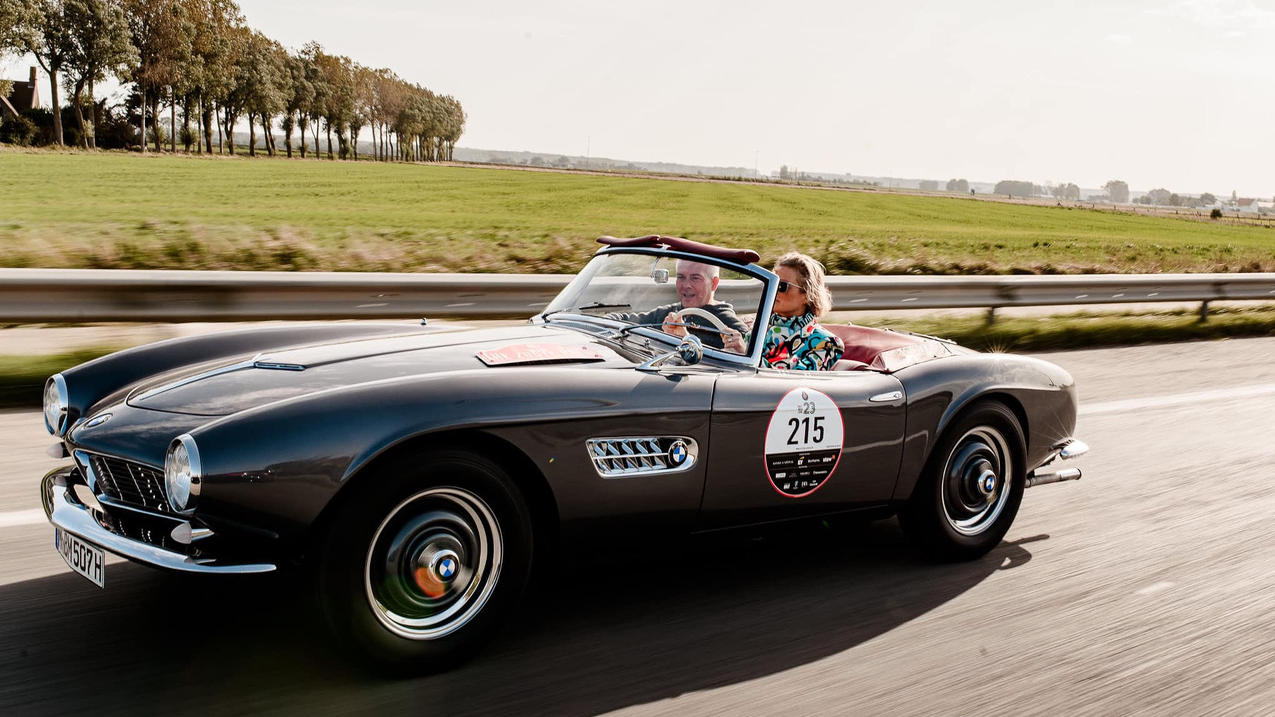Jaguar’s Ian Callum on his new design consultancy, favourite cars, and David Bowie

Ian Callum is one of the most respected contemporary vehicle designers. Last month he stepped down as Jaguar’s creative director to start his own design and engineering business, suitably called Callum, leaving Julian Thomson, Jaguar's former head of advanced design, at the helm.
In his 20 years at Jaguar Callum was instrumental in completely redefining the marque’s design course, and for envisaging products that led to global success and recognition. In particular, the two-seater F-Type became a worthy contemporary successor to the iconic E-Type, while the The F-Pace and E-Pace were timely products that introduced Jaguar customers to the popular SUV sector. Most provocatively, the I-Pace saw the marque take on electrification with design confidence. Perhaps time was ripe to move. ‘You know there is never a right time to go, you just have to do it, and at the age of 65 it felt right,’ he explains. ‘I’ve been in the corporate world for so long that I needed to get involved in making other stuff – not only cars.’
A post shared by Ian Callum (@iscallum)
A photo posted by on
Callum spent the first 12 years of his career at Ford where, amongst other cars, he sketched the popular Puma coupé. Then as chief designer of TWR Design, he was responsible for the Aston Martin DB7, Vanquish and the early stages of the DB9. When he entered Jaguar Land Rover in 1999, the company was in a very different place. Under Ford ownership, the two brands were struggling with their identities. This was a new beginning though, as the new parent company, Tata Motors, offered creative freedom. Callum and Land Rover’s Gerry McGovern thus set about completely reshaping the two.
Called simply ‘Callum', the new company has 20 employees operating from a fully-functioning 20,000 ft sq facility in Warwick, England. Callum is familiar with the Midlands and feels there is enough skills here to make things happen. Equally he talks passionately of supporting British craft and making his products locally. He says the firm will engage with school kids and create apprenticeships.
The studio will focus primarily on bespoke and limited-edition products across design, lifestyle and travel. ‘I would love to do baggage and leather goods, the obvious stuff like watches, maybe even clothing. I want to test myself,’ he says. There are projects in the pipeline that he cannot discuss, but altogether the business will follow an organic process. ‘One thing I know,’ he adds, ‘is that everything has to have a story and a soul.’
This feels like quiet a departure for Callum who ran a team of some 500 designers and modellers at Jaguar. Is he escaping the corporate world? He replies candidly: ‘JLR got so large! I had achieved my objectives. JLR has more of an engineering bias now, more of a pragmatic outlook.’
Ian Callum's top five cars (in no particular order):
1. The DB7 shaped Aston Martin’s design for the next 20 years
2. The C70 coupé was sketched whilst at TWR Design to challenge classic Volvo design
3. The F-Type became the first two-seater sports car for Jaguar since the E-Type
4. Jaguar’s C-X75 hybrid-electric performance car never reached production but made it to the set of James Bond’s Spectre
5. Jaguar’s first electric car, the I-Pace challenged conventional vehicle design
One of the biggest highlights of his career at Jaguar was creating the XF saloon. ‘It was a significant turning point in our story,’ he says. ‘The F-Type was also a dream come true for me.’ His biggest regret is not producing the C-X75 hybrid-performance prototype. He admits he will continue to design cars, but only electric vehicles. Coachbuilding, he says, will return to the auto scene especially as it is easier to base new car models on an electric platform. ‘This opens up huge possibilities. There is a market for bespoke vehicles. As you move up the luxury chain, cars will need to become more and more individual, and we are there to cater for this group.’
Asked who he admires creatively and Callum says David Bowie. ‘He was creative until the very end. You have to get your stuff out before it’s too late, and you have to prove to yourself you’re still on-top.’ As a departing note, he says the electric I-Pace was a significant car for him. It created the opportunity to do something innovative that would challenge the perception of Jaguar. ‘It was a starring role for my exodus. I almost left immediately afterwards,’ he smiles.
INFORMATION
Receive our daily digest of inspiration, escapism and design stories from around the world direct to your inbox.
A writer and editor based in London, Nargess contributes to various international publications on all aspects of culture. She is editorial director on Voices, a US publication on wine, and has authored a few lifestyle books, including The Life Negroni.
-
 At last: a London hotel that’s great for groups and extended stays
At last: a London hotel that’s great for groups and extended staysThe July London Victoria, a new aparthotel concept just steps away from one of the city's busiest rail stations, is perfect for weekends and long-term visits alike
-
 Three new smartwatches showcase new frontiers in affordable timepiece design
Three new smartwatches showcase new frontiers in affordable timepiece designLong may you run: smartwatches from Withit, Kospet and OnePlus favour function and value above all else, demonstrating just how much the smartwatch has evolved in recent years
-
 Debuts, dandies, Demi Moore: 25 fashion moments that defined 2025 in style
Debuts, dandies, Demi Moore: 25 fashion moments that defined 2025 in style2025 was a watershed year in fashion. As selected by the Wallpaper* style team, here are the 25 moments that defined the zeitgeist
-
 JLR is a mainstay of modern motoring luxury, but do car brands need creative figureheads?
JLR is a mainstay of modern motoring luxury, but do car brands need creative figureheads?With Gerry McGovern reportedly departing from Jaguar Land Rover, what next for the Indian-owned, British-built house of brands?
-
 The Eagle Lightweight GTR is a minimalist expression of racing car aesthetics
The Eagle Lightweight GTR is a minimalist expression of racing car aestheticsEagle E-Types is renowned for its stewardship of Jaguar’s iconic 1960s sports car. With this one-off Lightweight GTR version, the company has pushed its ethos to the limit
-
 Jaguar’s big rethink earns its Type 00 concept car a Wallpaper* Design Award 2025
Jaguar’s big rethink earns its Type 00 concept car a Wallpaper* Design Award 2025We salute the forward-thinking and bold choices of the dramatic Jaguar Type 00 Concept, a preview of next year's all-new electric GT
-
 The top 10 concept cars of 2024, as selected by Wallpaper’s Transport Editor
The top 10 concept cars of 2024, as selected by Wallpaper’s Transport EditorWe round up our favourite forays into futuristic design with this collection of concepts and design studies showcasing the transport of tomorrow
-
 La Vie en Rose: can the Jaguar Type 00 reset the narrative surrounding the brand’s reinvention?
La Vie en Rose: can the Jaguar Type 00 reset the narrative surrounding the brand’s reinvention?This is the Jaguar Type 00, the first physical manifestation of the reborn brand’s new commitment to ‘Exuberant Modernism’. We take it for a semiotic spin
-
 Jaguar reveals its new graphic identity ahead of a long-awaited total brand reboot
Jaguar reveals its new graphic identity ahead of a long-awaited total brand rebootJaguar’s new ethos is Exuberant Modernism, encapsulated by a new visual language that draws on fine art, fashion and architecture
-
 Helm’s meticulously re-imagined Jaguar E-Type features a finely crafted interior by Bill Amberg
Helm’s meticulously re-imagined Jaguar E-Type features a finely crafted interior by Bill AmbergHelm transforms the legendary E-Type into a thoroughly modern machine, upgrading every aspect of Jaguar’s pioneering sports car to an exacting brief
-
 Zoute Grand Prix is a car fest like no other at a pristine Belgian beachside town
Zoute Grand Prix is a car fest like no other at a pristine Belgian beachside townAmy Serafin takes to the well-heeled streets of Knokke-Heist to experience the Zoute Grand Prix, its annual cavalcade of classic car-related events, from a rally to an auction